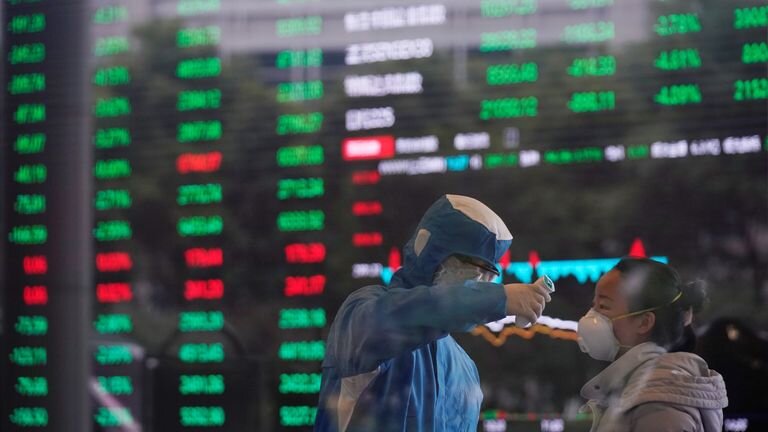Economists elaborate on best ways to tackle aftershocks of coronavirus outbreak

TEHRAN - As the new coronavirus (known as COVID-19) continues to spread across the world, red flags have risen in various sectors and governments are doing all they can to contain the virus from further spreading.
All over the globe schools and universities are shut down, restaurants, public places, and most of the shops are closed and people are under mandatory lockdowns.
Such restrictions will consequently result in serious problems and even recession for most of the world’s economies.
This situation has created a whole new frontline in the battle against coronavirus: the economic front.
Nations all over the globe have started looking for economic strategies and programs to handle the aftershocks of the outbreak in the best possible way.
In this regard, various rescue packages have been introduced by governments which mostly include a mixture of credit assistance or guarantees, wage subsidies, tax deferrals, lowering interest rates, etc.
But what is important in this context, is to determine what strategy is most effective in mitigating the economic impacts of the virus outbreak?
Current programs: pros and cons
In a general sense, two major approaches have been taken by economists about the economic impacts of the coronavirus.
Since the current virus outbreak has affected both the supply and the demand sides of the countries’ economies, economists either believe in supporting the suppliers or stimulating the demand side.
Considering the later strategy, analysts and experts argue that measures that target the demand side are not comprehensive and can even be counterproductive since in motivating the demand we are encouraging interpersonal contact and therefore lead to further transmission of the virus and as a result prolong the negative economic impacts and create a broken cycle.
Concerning the supply aspects, although supporting the Small and Medium-Sized Enterprises (SMEs) and vulnerable production units that have been affected the most from the virus outbreak, is an inevitable responsibility of the governments, but irrational liquidity support could also seriously harm the economy in the long run.
As we said the coronavirus has already hit the demand side of the economies hard, so implementing programs like interest-rate cuts and injecting liquidity into the market, although in the short term could support the stock markets in the long run, would result in more inflation and even lead to stagflation.
Better options
As the Noble Prize winner economist Robert Shiller puts it, at times like this in which the source of the problem is something real and not psychological it is hard to choose the best approach to tackle the issue altogether.
“It’s hard to be effective at a time like this when the source of the problem is real,” Shiller said when asked about the most effective measures for supporting the economy in times like this.
So it seems that there is not a single solution for such a huge disruption, however, some suggestions have been made based on the previous experiences of the world’s successful economies like Germany and the U.S, some of which are already being applied by other governments.
According to economists, the most effective measures which can be taken in the current situation is to offer tax relief plans and credit guarantees to the production units and generally those who are affected to give them the choice to borrow if they feel the need. This would prevent the unnecessary injection of liquidity into the economy.
Germany’s short-time work allowance
One last solution which has been previously tested and proved to be very effective in situations like this is called “short-time work allowance”.
This strategy was implemented by the German government to help the economy recover after the 2008-9 financial crisis.
Short-time working means that employers will be able to reduce their employees’ working hours and receive financial support from the government to compensate for a significant part of the costs for retaining the employee.
This way the employees will receive up to 90 percent of their normal wages despite their shorter work hours and the production units won’t be forced to completely stop operation or bear heavy losses.
Countries all around the world are advised to follow this strategy to prevent job losses and also to support SMEs and production units to get back up quickly after the pandemic is gone.
Strict preventive measures
In a recent survey published earlier this month, the Initiative on Global Markets (IGM), which is a research center at the University Of Chicago Booth School Of Business, asked top economists from all over the world about the best possible way to tackle the coronavirus problem.
The IGM survey showed that most of the world’s top economists believe that implementing strict preventive measures and near-complete lockdown of businesses and cities is the best way to contain both the virus and its economic consequences.
According to the survey, relaxing strict quarantine regulations in a time that the likelihood of the virus being re-spread is high will lead to greater economic losses compared to continuing strict quarantine regulations until the possibility of contamination recurrence is eliminated.
So we can conclude that the best possible way to tackle the pandemic is to apply strict preventive regulations, despite their severe short-term economic impacts, to contain the virus in the shortest possible time and then apply support packages to help the economy get back up.
EF/MA
Leave a Comment